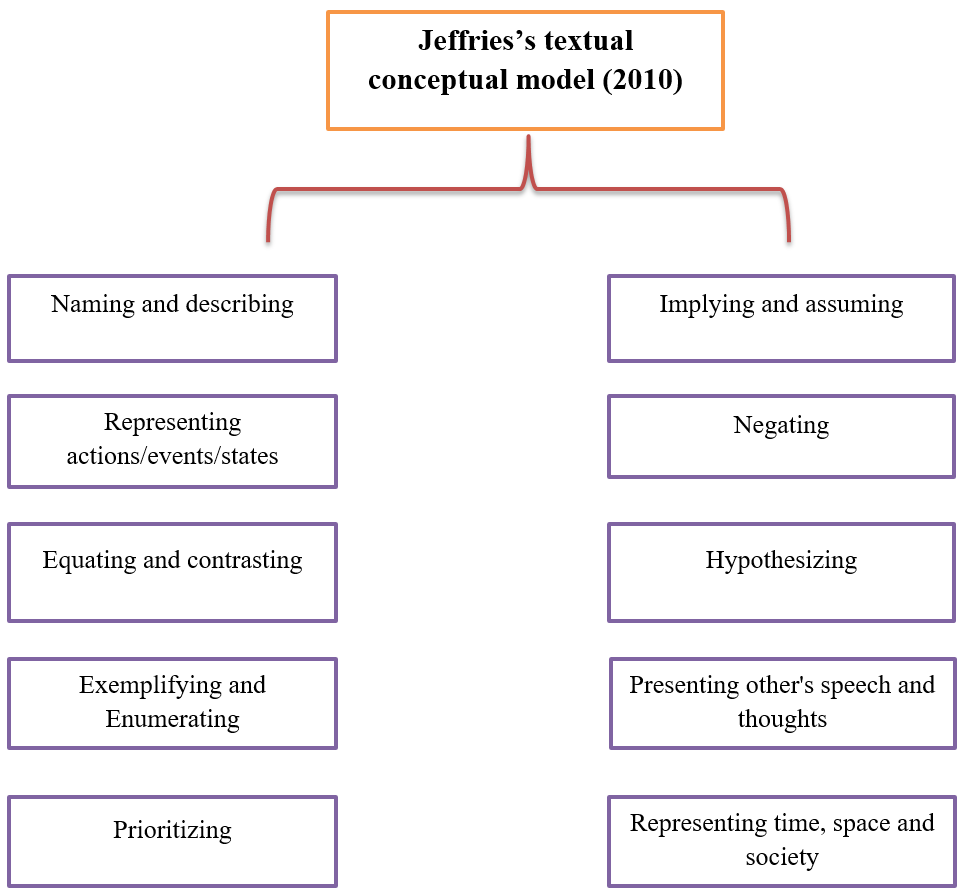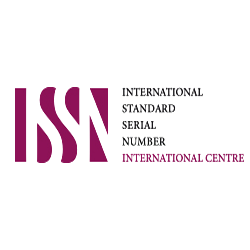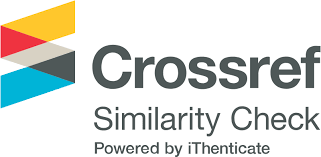
STEPS JOURNAL for LINGUISTICS (ٍSJLING)
Volume 1, Issue 1, pp: 1-6
![]()
A Critical Stylistics of Terrorism in Selected Newspapers
Hussein Hamid Kareem1,*
1,* Babylon Education. Iraq, Babylon.
* Correspondence Author
Received: 15 May 2023 | Revised: 5 July 2023 | Accepted: 20 July 2023 | Published: 24 July 2023
This study deals with the way the concept ‘terrorism’ has been dealt in selected newspapers’ reports. The date is gathered from reports published on the web sites of those selected newspapers, specifically two reports from New York Times. This study aims to show how ‘terrorism’ is dealt with stylistically from the linguistic point of view. In order to achieve the purpose of this study, it is necessary to solve the problem of how ‘terrorism’ is considered in newspapers’ reports. Thus, it is hypothesized that linguistic manipulation is one way used to convey the idea of terrorism. In order to analyse the data, Jeffries’s textual conceptual model Strategies (2010) will be adapted. It concluded that newspapers are different among them due to a certain policy followed in that country or to achieve a certain purpose. Thus, particular vocabularies are chosen for a purpose.
Keywords: CS, terrorism, newspapers reports, power, influence, burden, and justification.
The ability to communicate through language is thought to be a characteristic of humans. Numerous angles, including discussion, can be used to conduct study on it. As language is a very important tool used by newspapers to indicate something through the use of words that may influence the direction of the discourse, the study of language can be subjective or objective. For this reason, it must be researched without the use of any personal judgment in order to produce objective results (Fairclough, 1995).
As a result, language is recognized as an essential tool for communicating a message through the publication of reports as well as a form of communication. There are two types of language: formal and informal (Nunan, 1993). Human discourse in daily life serves as a proxy for spoken language, whereas words used in published newspaper articles serve as a proxy for written language (Widdowson, 2004). Because it reveals the newspaper’s overall point of view, the language employed in newspaper coverage is crucial (Luke, 1996).
Mills (1997) asserts that language and discourse are used to create a cultural image that provides a broad overview of how newspapers generated their reporting on the concept of terror, which started to emerge after September 11, 2001. According to the historical context and the language employed in their reporting, newspapers do play a crucial role in addressing the concept of terror. This changes depending on the newspaper, the nation, and the environment in which the piece is written. As a result, reporting the occurrences is regarded as a contentious issue (Fairclough, 1995).
Newspapers are meant to be objective in their reporting, however how objective they are is controversial. As a result, some publications employ implementation throughout their reporting to convey an inferred message to their readers (Luke, 1996). Terrorism is a term used to describe an act carried out by terrorists in order to instill fear in the public through the use of force. Assassination, torture, and massacre are all terms associated with this notion, and when terrorists carried out a variety of attacks on victims, it has grown in popularity in the media. (Ghosh et al., 2010).
According to Marthos (2017), the term “terrorism” is an all-encompassing concept that has grown in popularity across the globe as a result of its negative effects on people’s minds and national infrastructure. As a result, every newspaper in the globe is now covering this issue, which have begun to address it in a variety of ways using various lexical terms. The common perception of this term may range from one newspaper to the next, as well as from one country to the next. This results from a country’s policy, as some governments may view terrorist attacks as acts of self-defense while others may view them as illegal and terrorist acts.
The terminology employed in published newspaper reports can be used to infer the nature of the paper’s and the nation’s overall opinions, as well as the meaning of the word “terror” (Ghosh et al., 2010).
Since the definition of “terrorism” differs from newspaper to newspaper, the purpose of this essay is to ascertain it. This study also examines the objectives that are achieved by utilizing a distinctive language along with a variety of discursive stylistic strategies to accomplish a certain objective. So, it is hypothesized that the term ‘terrorism’ differs from one newspaper into another for achieving an objective.
1.1. An Introduction to Critical stylistics
Critical stylistics (CS) is a stylistic technique of linguistic analysis that concerns the way social meanings are expressed through language, according to Olaluwoye (2015) and Jeffries (2007) is credited with developing this approach in order to discover:
A-Discourses that are tied to dominance on the females in a society.
B-Feminist beliefs are incorporated into the dominant discourses.
It should be highlighted that CS is involved in merging both the primary text functions, which represent the real world through text words and text structures. According to Jeffries (2010), there cannot be a commensurate relationship between form and function. This is a critical question for certain beneficial parts of language, such as poetry writing and the use of metaphors in everyday life, as well as negative aspects, such as manipulation and lying. She goes on to say that the gap between stylistics and CDA can be overcome through CS by applying and extending critical linguistics to the text analysis section.
In this light, the most comprehensive set of analytical toolkits is a fundamental contribution of CS. Because both stylistics and CDA are concerned with discovering power relations and ideologies entrenched in discourses, it may appear to be a separate topic from CDA and may be subsumed under critical linguistics studies. It should be noted that CS is unaffiliated with any political ideology. Actually, all texts are ideologically based, whether consciously or unconsciously. CS, on the other hand, is interested in using that set of analytical toolkits to uncover embedded ideologies in texts and discourses. As a result, the analyst will be free of any subjective viewpoint.
As described by Norgaard (2010:11–13), CS is a concept that can be used to explore the process through which social meanings are made explicit through language. Both critical linguistics and CDA stimulated this stylistic element. The two are closely related even though the term “CDA” is frequently used to refer to both of them collectively. Simpson (1993: 8) demonstrates that while conducting linguistic analysis to comprehend ideological perspectives, whether in literary writings or elsewhere, the text producer appears to adopt specific modes of reading while suppressing others. The goal is to look below the language surface and discern the stylistic decisions that shape the meaning of the text in question.
1.2. Terrorism
Ghosh, T., Prelas, M., Viswinath, D., & Loyalka (2010) provide evidence that the term “torrorism” refers to the French Revolution, which started with the intention of defending the rights of the French people and establishing the basis for democracy but was later used to further various goals and objectives. “Terrere” is a Latin word that means “to hurt,” which is where this term originates.
Nowadays, the main objective of terrorism is to spread fear, which makes other terrorist objectives, including murder and assassination, possible to achieve while terrorism is being combated, such as terror-related tweets. Others are quick to cover a terrorist occurrence on social media when it happens, but this reporting is limited by certain freedoms that differ from nation to nation based on ideology and power (Ghosh et al., 2010). According to Neumann (2005), the grounds for terror can vary. Some of them may be social injustices, while other sources include deviant human brains working toward a certain purpose, whether it be political or social. Thus, utilizing torture and threats as a form of conduct, terrorism is employed as a tool to accomplish a particular objective. The basis for the concept of terror is a thought. The intended goals are attained by killing and death. In order to convey the sense that they are able to perform it, terror leverages these terrorist ideas—destruction and killing—as nonverbal cues. Attacks by terrorists indicate that a location has been deemed crucial for drawing attention to it (Fairclough, 1995)
Longman (2003) asserts that psychological factors dominate the causes of dread. Though they can also be politically motivated or driven by a desire to establish the existence of terrorists in a certain area in order to further an agenda, the majority of terrorists are psychologically disturbed. The necessity to modernize society expansion in a particular area, which can only be done by utilizing force, could be another sociological justificationIt may also be a means of achieving particular financial goals, as seen by the use of extreme force that is considered a companion (Ghosh et al., 2010).
1.3 Newspapers
The reader may easily keep up with all the events he is interested in, making newspapers one of the most current ways to stay informed about world events. Newspapers have changed their viewpoints over time as a result of social, political, or economic development, and as a result, they now support some goals while disregarding others because of their ties to foreign organizations or their adoption of the government’s agenda (Willcox, 2005). Newspapers are renowned for being simple to use and offering inexpensive, thorough coverage of events, which enables readers to understand what is happening throughout the world (Wrong, 1979). The term “newspaper” suggests that the basic and thorough coverage is news, but there are other topics, such as advertisements, ceremonies, political transactions, and different social situations, where newspapers play a crucial role in handling a variety of news from around the world (Rogers, 2005).
Newspapers play a crucial role in news reporting, claims Randal (2007). The primary objective of newspapers is to study facts and explain them to readers in order to clarify ideas, facts, or events in various parts of the world, but one of the most significant elements that impacts newspapers is that the language used in newspapers can be affected by subjective judgments.
The language used in newspapers has a significant role in the dissemination of news since newspapers have a distinctive linguistic style that has an impact on readers. It significantly influences how readers feel and what they decide in regards to a specific global phenomenon (Kadoch, 2013).
The qualitative method is used in this term paper to analyze the selected data. This type of analysis is perfect for confirming the data in terrorism-related language. This method of investigation was selected since it is a well-liked strategy for guaranteeing that objective outcomes are produced through credible justifications (Babbie, 2014).
2.1 Data Collection
Specifically chosen terrorism-related articles from an American daily serve as the foundation for this study. These reports were chosen between 2017 and 2021 in order to guarantee current terrorism attacks. There will be two reports, both of which were received from the website of The New York Times, an American daily. To preserve uniformity, they were selected in this way. When it comes to the use of terrorism, these two papers represent diametrically opposed ideological stances. Due of their widespread influence and perception as a prime example of “terrorism,” they were picked (William, 2004).
2.2. Theoretical Framework: An Adapted Model
Jeffries’ (2010) textual conceptual model is the foundation of this study. Jeffries used a model for her critical stylistic approach called the textual conceptual functions model. The functions in this paradigm stand in for the layer of meaning between language structure and language in context. In that they produce world views, they contribute to language’s ideational function. This model is used to analyze newspaper articles in terms of two contrastive groups: the positive in-group and the negative out-group. Peaceful groupings like common people, victims, and official members make up the positive in-group. Terrorist assailants in general serve as a representation of the harmful out-group. These strategies are represented in the following figure:

Figure 1. An adapted model of Jeffries’s textual conceptual model Strategies (2010).
Two reports will be chosen from a selected American newspaper. The newspaper is The New York Times. These reports will be analysed according to an adapted model.
3.1 Analysis of American Newspaper Reports
Report 1: “Sri Lanka’s Terrorist Attacks” The 24th of April, 2019
As soon as the report’s title appears, the reporter begins to recount the events leading up to the terrorist act carried out by extremists in Sri Lanka. For the goal of summarizing the report, the writer employs a variety of tactics, one of which is ‘naming and describing’ to illustrate the assault technique. The terrorist’s method is to use bombs to kill as many people as possible. “In Sri Lanka, a series of well-coordinated explosions has killed more than 300 people.” Throughout this strategy, the reporter makes reference to the number of people killed during the incident utilizing a different manner represented by the “Enumerating” strategy by stating the phrase “300 dead.” The reporter does this on purpose to highlight the ominous aspects of the terrorists’ extreme ideologies. In this case, the attacker is a member of the out-group who is attempting to harm the victims, who are members of the in-group.
Another tactic employed by the author to depict the terrorist attack is the “implying and assuming” strategy, in which he gives ambiguous information about the terrorist attack because they are enigmatic groups that specifically direct terrorist operations against civilians. “Obscure and underfunded local group carry out one of the deadliest terror attacks,” the author writes. To keep the information ambiguous, the author employs this technique. The use of Sri Lankan forces, “The Sri Lankan government,” to convey the terrorist event in a more objective manner and to formally transfer the report to the government of Sri Lanka recipient are examples of how the writer, among other strategies, uses the “other’s speech and thoughts” strategy to formalize the newspaper report. This greatly affects the report’s validity.
When a reporter wants to convey a specific notion, he or she may utilize terms that aren’t designed for that purpose. This is shown when using the “Hypothesizing” approach negatively in this report throughout the use of “government was in utter meltdown,” as the writer refers to the state’s breakdown, and this is something that presents a poor picture of the country’s security situation. Instead, he employs self-glorification to favourably refer to Sri Lanka by calling it a “developing country.” To highlight the worth of the nation being targeted, this is frequently done on purpose.
The writer portrays the terrorists using distinct linguistic phrases, and the reporter employs the ‘Prioritizing’ approach as an indirect comparison to convey a certain point. In this context, the writer depicts terrorists as “extremely nasty” monsters, which may imply that the force used by terrorists to achieve their ultimate goals, namely the propagation of terrorism and fear among civilians, represents a certain ideology.
The reporter uses the “representing of action” strategy to compare Sri Lanka before and after 10 years “about 10 years ago,” which is the spread of terror and fear among the people as a result of the presence of armed groups whose goal is to kill and destroy everything they can find in the country. Another tactic used by the reporter is the “representing of ideas” through the use of specific linguistic words to convey a less effective meaning. For example, the statement “we are now witnessing the rebirth of this country after decades of bloodshed” implies that Sri Lanka has endured extremely challenging conditions as a result of the civil war.
In order to provide the appearance that the members of the in-group are nothing more than the victims of the terrorists from the out-group, the reporter also employed the “assuming” technique. This truth is stated by the reporter when she says that they are “encouraging them to assault Buddhists.” This strategy is used in conjunction with “extremely hostile messaging” to suggest that tension between the in-group and the out-group contributed to the terrorist incident. Language is important for communicating a message subtly, particularly when the reporter implies that the terrorist is a Muslim. Because it generalizes such a terrible deed committed against Muslims, the language employed in newspaper reporting is particularly dangerous: “Muslims have the right to kill anyone who is not a Muslim.”
By using the terrorist’s name and the “description” method, the reporter established the veracity of the information by stating that “Mohammed Zaharan and his followers are preparing suicide assaults at churches throughout Sri Lanka.” The reporter makes reference to the terrorists who attack churches throughout this strategy as being Muslims. When terrorists are cynically referred to as “Islamic State fighters,” some people may take this as sectarianism between Muslims and Christians.
Reports 2: “ISIS Claims Attacks, and President Says Things Will Change” The 23th of April, 2019
The reporter used linguistic vocabulary in a deliberate manner to convey a specific idea, and this thing is perfect through the use of the “Representing” strategy, which is exemplified in the title itself “ISIS Claims Attacks,” which clarifies the indication that terrorists are not afraid in declaring their charge for terrorist attacks. This is a blatant example of how the terrorists are dishonest and show their violence by targeting the needy and weak in their attacks.
After the terrorist attacks in the city, which resulted in the deaths of many civilians, the president issued a statement outlining his plans for retaliation against the terrorists, “President vows shakeup,” and this exhibits another tactic used by the author in the report, which is denoted in the “Equating” to authority, which is regarded as official evidence of the difference between the two sides, which are represented by the extremists side and the citizens.
Every action has a reaction, and the terrorist attacks against civilians are an example of this. The author uses various techniques to illustrate this idea, such as the technique of “assuming” that “bombs killed more than 350 people,” which demonstrates how terrorists target civilians by setting timed bombs to detonate in a way that kills as many civilians as possible. Such acts reveal both the radicalism of terrorists and the absurdity of their religious beliefs. The reporter also uses a new technique to improve the coherence of his report, specifically the use of the “Enumerating” number game strategy as a manner of objectively releasing the report. This is clear when he uses the phrase “killed more than 350 people” to call attention to the reader’s cruelty toward the out-group members. It is the language that has a considerable impact on how a concept is presented.
The reporter will occasionally use the “conduct” technique to present a particular idea within a newspaper article using a particular language. This is symbolized by the use of the “contrasting” strategy, in which he explains the relationship between various parties who were the cause of these terrorist attacks. This correlation is symbolized by fanatics on the one hand and certain Islamic groups known as ISIS on the other.
The language employed in journalistic coverage is made more objective by the inclusion of realistic depictions of terrorist incidents. The author uses sparse speech throughout the method of “describing” as a standard description in order to capture the core of the terrorist attack against people. “I must be honest and admit there were failures on the part of the defense officials” to depict the nature of the terrorist assault against civilians, which is reflected in taking certain official precautions. The use of this technique has an impact on the audience since it is viewed as proof of the newspaper’s objectivity and that of the writer or party in charge of the newspaper’s moderation.
One of the official ways to defend the state is to give the government’s soldiers honor by using words that convey the state’s authority. This strategy was demonstrated by the adoption of the “Naming” tactic to glorify oneself: “There was an intelligence report about the attack,” which suggests coordination between government troops in order to thwart terrorist attacks and safeguard civilian lives.
Another technique the reporter employs to create language about terrorism is the pragmatic association, which includes the use of the strategy of “seems to have been foreign involvement,” which is implied secondarily about the relationships created between terrorists and their relationships with other nations, and which denotes that there is cooperation between terrorists inside the nation and the compassionate administrations.
Additionally, the reporter uses the technique of exaggerating the “deadliest terroristic attacks,” which results in the individualized and subjective reporting of terrorist activities or assaults through the use of language expressions to indicate abnormality. As a result, some of the goals set forth by some groups that encourage the use of such phrases are achieved.
A number of things were learned after the data from one American newspaper was analyzed, including the ideological and linguistic slant that were given to the news. The information is disseminated by polarization, which pits in-group and out-group poles against one another, in both outlets’ reports. This manipulation, which is distinct from an ideological viewpoint, might be able to accomplish some of the goals. As a matter of fact, several studies were conducted about ‘terrorism’ which all focused on how important the language is when dealing with newspapers reports. One study was by Saeed (2004). He investigated the reporting on terrorism on two separate channels (Al-Jazeera and Al-Arabiya) in his work titled “A Study of Reporting about Terrorism on Two Pan-Arab Television News Channels.” He made the point that how news regarding terrorism is reported in the media is crucial. To contribute to the creation of terrorism news, language is crucial. The fact that these two channels consistently regard terrorism victims as Muslims in contrast to Western outlets is a very important fact. Such a thing is similar to a study done by Taoufik. In his study “The language of terrorism: Al-Jazeera and the framing of terrorism discourse,” Taoufik (2009) focused on the function of language in creating the cultural images that influence how people see terrorism. The conclusion reached was that contentious news reporting undermines the media’s objectivity. Additionally, Kristen (2013) conducted a research on “The Terrorists are Coming! The Terrorists are coming! (Or are they?)”. Kristen came to the conclusion that there are some underlying clues in the discourse about terrorism that might be connected to nationality, ethnicity, and conflict.
The American newspaper of choice emphasizes how terrorism affects society and how it has grown more powerful as a means of advancing predetermined goals. By identifying terror as the perpetrator of the act that results in chaos, violence, and devastation in the location where it is located, as determined by studying the newspapers’ language, American newspapers have strengthened the material processes of these stories. Because of this, the selected American newspaper addresses terrorism by relying on governmental support for the publication or government policy.
Cite: Kareem, H. H. (2023). A Critical Stylistics of Terrorism in Selected Newspapers. STEPS JOURNAL for LINGUISTICS, 1(1), 1–6. https://doi.org/10.61706/sjling13001
Copyright: © 2023 by the authors. Licensee SSG, Dubai, UAE.
This article is an open access article distributed under the terms and conditions of the Creative Commons Attribution (CC BY-NC-ND 4.0) license (http://creativecommons.org/licenses/by-nc-nd/4.0/).




An independent academic publisher with an editorial team including many of the top researchers in the world. SSG publishes research, review, and case report articles in double-blind, peer-reviewed, open access scientific and academic journals.
Copyright © 2023 Scientific Steps International Publishing Services LLC (Dubai – United Arab Emirates)